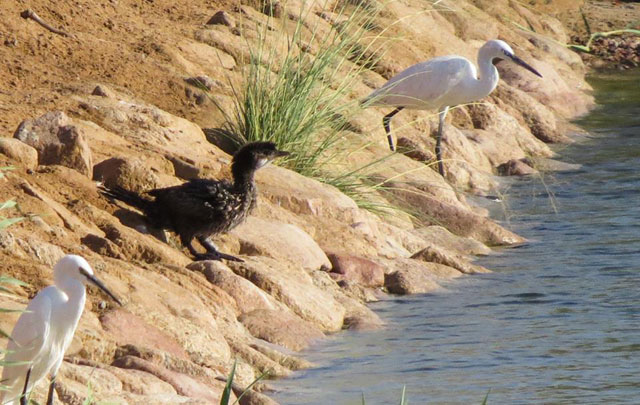AMMAN — An increasing number of rare migratory birds is being registered in Aqaba, according to a conservationist, who noted that the Aqaba Bird Observatory (ABO) is serving as a natural habitat for globally endangered bird species passing through the Kingdom.
The fact that new rare bird species are being recorded in southern Jordan, particularly at the bird observatory, indicates that the observatory’s habitat is attracting migratory birds and serving its goal, ABO Director Feras Rahahleh said.
“Most recently, we have recorded the sighting of the Pygmy Cormorant in mid-September. This sighting is the second in Jordan in 20 years and the first in Aqaba,” Rahahleh told The Jordan Times on Thursday.
The Pygmy Cormorant is a member of the cormorant family of seabirds. It breeds in south-eastern Europe and south-western Asia. It is partially migratory, with northern populations wintering further south, mostly within in its breeding range. It is a rare vagrant to western Europe. Breeding colonially in wetlands with still or slowly flowing fresh water in coastal deltas and well-vegetated freshwater lakes, the Pygmy Cormorant builds a nest of grass and twigs in a low tree or reedbed, into which it lays its three to six eggs, according to web sources.
Sighting the Pygmy Cormorant in Jordan was usual in the past, in the northern region of the country, but the bird’s shrinking and changing habitat near Jordan caused its sighting to become a rare incidence, according to Rahahleh, who noted that several rare and globally threatened bird species stop and rest in the observatory, many that can now be seen during bird’s fall migration.
The Pygmy Cormorant was spotted in Ayla oasis, according to Rahahleh.
Located north of Aqaba, the observatory is spread over a 0.5 square kilometre area and serves as a station for birdwatchers from around the world, particularly since the port city is located on the Rift Valley-Red Sea route, which is the world’s second most-used flyway.
A total of 37 types of migratory soaring birds maintain flight by using rising air currents, annually travelling on the flyway. At least five of these species are globally endangered, such as white and black storks, buzzards, eagles and vultures, according to the Royal Society for the Conservation of Nature (RSCN).
Migratory birds in the southern hemisphere use the Rift Valley-Red Sea Flyway to return to Europe and the northern hemisphere in the spring. On their journey, more than 1.5 million birds stop over in places like the Jordan Valley to rest and drink water.
The ABO is owned and supported by the Aqaba Special Economic Zone Authority, according to Rahahleh.
